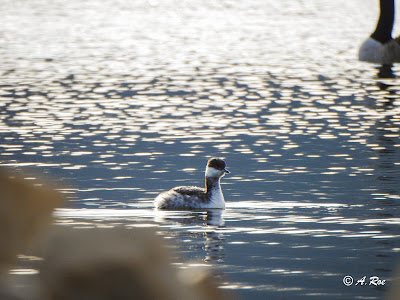In birding, there are many amazing moments that warrant celebration. Observing a new species for your life list, reaching or exceeding your birding goals for the day, month, or year, capturing sharp images of tiny warblers. But as birders we also have some days that just aren't as great. Plans being cancelled due to bad weather, a spot not being as productive as we would like, thinking we've captured sharp images only to find out later they are all blurry.
recently in my birding I have hit one of these low places. We haven't had the best weather lately her in Iowa for birding. I'm also still trying to find the spots that will provide the best birding opportunities and have been striking out in surprising places. My photography has been improving, which is one plus, but I find myself photographing the same few species over and over. This low is highlighted even more by the fact that it's February. Why February? Because in January, every bird is new to your life list and it's exciting to be starting over again, but by February you've recorded most of the winter birds that you're likely to see before migration begins.
 |
| I've been photographing a lot of Canada Geese (Branta canadensis) this winter. |
On one hand, this repetition gets extremely old and the thought of migration ever more enticing. On the other, observing the same species over and over gives you the opportunity to witness small parts of their life history that you may normally just look over. With all of the waterfowl that I've been observing lately I've been able to witness some of their mating displays and territory defense displays. Sometimes it's good to remember, when we hit these lows in birding, that this is an opportunity to make our birding more about the observing and less about our lists. Many studies on the life histories of birds have been done by people who simply observe them repetitively at feeders. Slow down and take the time to see what the birds are doing, you'll become a better birder by doing so.
 |
| I was recently granted the opportunity to witness the mating displays of this pair of Mallards (Anas platyrhynchos). This female is accepting the male. |
It's also good to remember in these times to never quit just because we're in a slump. Soon spring migrants will be returning and there will be new observations waiting to be made every day. And in the mean time, you never know when an uncommon bird might show up on an ordinary day. Just this week while birding at Lake Wapello State Park I was able to record and photograph a Horned Grebe, an uncommon species for this area. This was also a life species for me (#247) and a great bird to get me out of the early year slump that I was really feeling.
 |
| My slump buster Horned Grebe (Podiceps auritus). |
We are now exiting February and preparing for migration season. If the weather holds out early on we just might get some early birds moving to their breeding grounds. This is my favorite time of the year because of the species eruption that my year list is about to experience. It's also exciting because you never know who might be stopping over right in your own back yard. So if you've felt like birding is really dragging lately just remember that migration season and good weather are almost here. Happy birding!

















.jpg)



